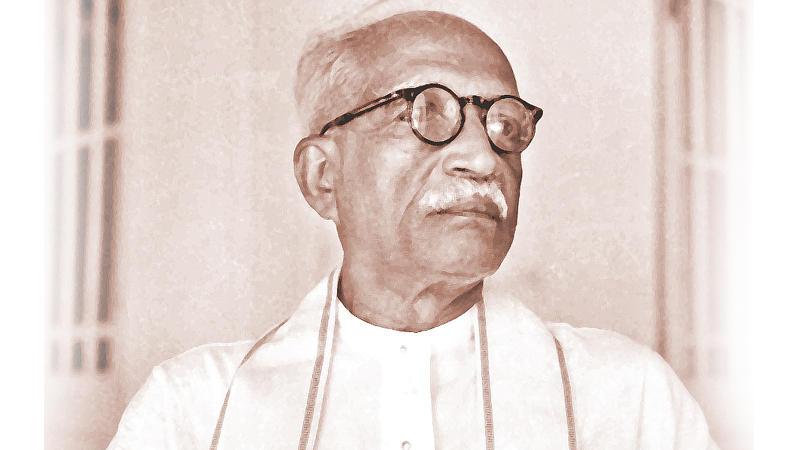by Ruth Surenthiraraj
I remember, with unusually vivid clarity, the first time I really noticed the presence of silence in the classroom. One of the lecturers, who was taking our undergraduate class, had assigned us reading to be done ahead of time, parts of which were quite tedious and had to be read twice/thrice over to be grasped. In true happy-go-lucky undergrad spirit, my classmates and I turned up having ‘skimmed’ the articles and nurturing the fervent hope that someone else would pick up the discussion in the event that any questions were raised. As you would imagine, it went horribly wrong. The lecturer posed a question that required some thinking, and we suddenly and silently went into panic-mode in a bid to offer something akin to an answer. A few of us tried to start things off by giving noncommittal responses in the general direction of the question and were kindly asked to explain ourselves further – at which point we fell silent once more because we felt that we hadn’t thought things through. The lecturer, instead of berating us for not reading adequately or making us feel like we were bad students, simply invited us to embrace the silence so that we could get our thoughts in order.
In recalling this incident, I remember the strong sense of discomfort that we felt as learners. It wasn’t, however, something that stemmed from the lecturer or their handling of what must have been a frustrating situation. Instead, I now read that feeling as the acute discomfort of learners who had been trained to view silence in the classroom as something negative. That incident – apart from giving me impetus to never turn up to my classes without completing my assigned reading – also invited me to begin exploring the role of silence and its presence (or absence) in our undergraduate classrooms.
Although silence in teaching and learning is still fairly under-researched and is rarely a nuanced consideration in mainstream conversations around the dynamics of a classroom, there are still broad arguments that have attempted to imbue silence with meaning. For one, our multiple religious traditions seem to have strong tendencies towards silence as a form of retreat to assist deeper reflection even though these traditions often sit in direct contrast with current trends to be constantly producing and documenting aspects of life. Conversely, there is often a ‘culture of silence’ (much bemoaned by Brazilian educator and philosopher Paulo Freire) that surrounds those who are socially, economically, and culturally vulnerable – a way in which socialisation teaches people to not interrogate their realities. Linguistically speaking, silence often assists us in distinguishing speech units (i.e., the silence that marks a pause in or completion of an idea/thought), but it can be further categorised as playing various functions in establishing relationships between participants in conversations. The possibilities of interpreting silence are myriad.
In the classroom, however, I think we are often limited to viewing silence as a negative indicator. As educators working with undergraduates, we assume that learners’ silence signals a disinterestedness or a disengagement from the critical approaches that should ideally frame undergraduate classroom discussions. At an even more basic level, we often consider silence to signify a lack of knowledge and we then attempt to fill that assumed void with speech that appears to address this lack of knowledge. As a result, we educators often view silence as a thing to be disliked at best and dreaded at worst. But what could silence really mean in a classroom of learners attempting to engage with new knowledge?
Firstly, it is very likely that the learners in our classrooms are expressing a deep-seated, culturally taught fear: the fear of giving the ‘wrong’ response. Sad as it is, it is still common to find educators who berate students for giving unacceptable answers. Instead of engaging with why the answer might not best reflect the desired response, we often shut students down when they don’t meet our (sometimes undefined) expectations. We rarely realise in the moment, though, that learning is a process in which ‘mistakes’ are as important as so-called successes. In fact, mistakes and errors often pave the way for deeper understanding of how what works and why. When learners begin to internalise the message that they don’t know enough to answer, they will simply opt to remain silent despite having a working knowledge of a subject. On the contrary, our classrooms should be safe spaces for ‘stupid’ or partial answers that encourage the students to reflect on why those responses require more thought.
In a constructivist view, learners are not blank slates which we fill with information: rather, they are intellects with existing knowledge structures (schemas) which are formed based on their experiences in life. When these existing schemas meet new knowledge in the classroom, the learner is required to make some adjustments in order to accommodate the new knowledge. This accommodation requires time and the capacity to be reflective, which in turn enables a more integrated worldview. Indeed, if education is meant to be transformative, repeated opportunities to integrate new and existing knowledge structures must be offered to learners within our classrooms. In short, I believe silence could also indicate an unspoken request for space and time to contemplate the significance of new knowledge. Sometimes, we give our students too little time to fully turn ideas around in their heads before requiring them to respond to us. I’ve observed many good educators allowing their frustration at silence to compel answers from students – resulting in responses that might be superficial rather than actual reflections of learning. A better way to undercut our impatience with silence would be to invite learners to hash out their fledgling ideas among themselves before attempting to articulate a holistic and/or individual response. This preliminary discussion often assists in integrating new and existing knowledge in the relatively safer space of peer groups.
Over centuries, educators have also played directly into the problem of sanitising education – separating theories and practices from the contexts in which they originated or detaching them from the sociocultural impacts they may cause. In turn, learners gain an ‘education’ that is removed from its everyday consequences. This also makes it difficult for learners to assimilate such unrelatable concepts, leading to more awkward silences in our classrooms as they attempt to collect seemingly detached pieces of knowledge.
Finally, silence is further compounded in classrooms where students are expected to respond in their second languages. With increasingly more undergraduate study programmes opting to shift wholesale (and almost overnight, in some cases) to the English medium instruction, many more undergraduates are going to be struggling to articulate their thoughts in a language that is not part of their repertoire. Educators (especially those other than language teachers) must be doubly attentive to these unspoken difficulties when interpreting silence. There are a heartbreakingly large number of stories where perfectly articulate and knowledgeable students are deprived of their classes (not to mention jobs) simply because they have not mastered the art of the second language yet. In wrongly categorising such students as ‘below par’ or not having the requisite ‘skills’, we relegate them as incompetent rather than critique our own skewed standards. I have often admired a student in my class for her comfort with awkward pauses as she attempts to construct a sentence that accurately reflects her thoughts as well as ‘acceptable’ language structures. But this is also possible only because I have now taught myself to never rush learners as they navigate new knowledge in a language that they are not fully familiar with. As a teacher of English as a second language, the tendency is to jump in with the necessary vocabulary so that the silences/pauses cause minimal discomfort to the learner. Yet, how will our learners ever be comfortable with the pauses that are inherent to language use and language learning if we do not (want to) confront our own discomfort with silence?
Learner silence, therefore, could act as a signifier of multiple underlying processes and problems. I am not in any way suggesting that silence cannot be associated with a lack of knowledge or with disinterest. However, to boil nuances in learner silence down to either a lack of knowledge or a sense of apathy regarding their discipline is to view learners reductively; we rob them of their right to be considered and accommodated as complex intellects in our classrooms. In rephrasing our questions (to better shape the silences in our classes) or in simply limiting our impatience at the lack of sound/response, we begin to create an atmosphere that is supportive of deeper engagement with our disciplines.



